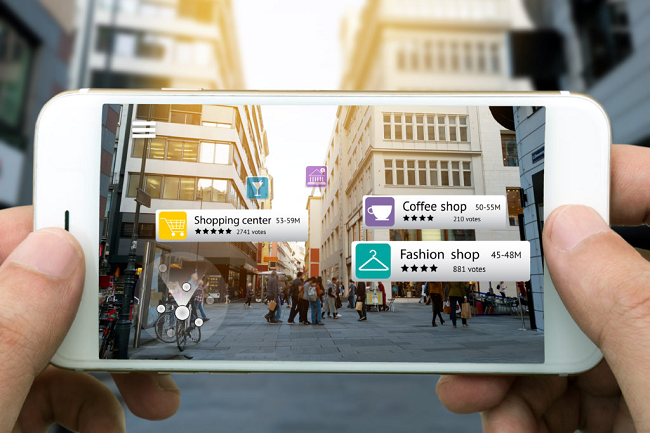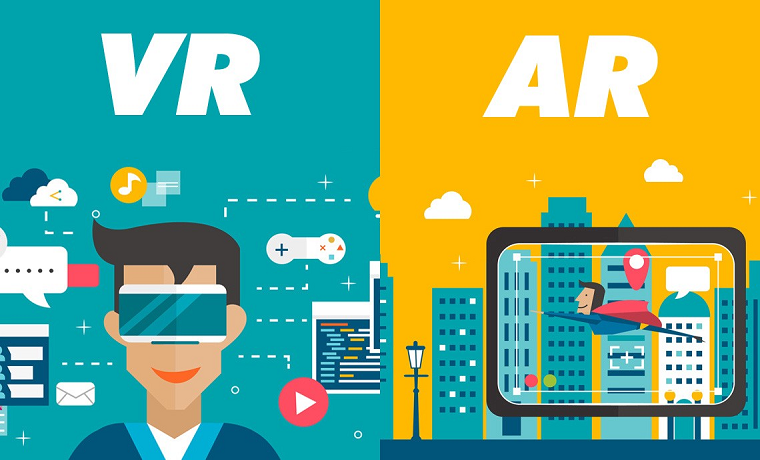The terms augmented reality and virtual reality has become popular in the last couple of years. Whenever there is a discussion of augmented reality, the topic of virtual reality also comes into the picture and vice versa. Additionally, another term related to these two terms is called mixed reality.
In this article, we will look into the major differences between AR and VR. From advantages and disadvantages to their real-world application, we will closely look at the differences and how they are changing the world. Before that, let’s understand the basics of augmented reality and virtual reality.
Augmented Reality Basics
I guess you must have heard about the popular game Pokemon Go. It’s one of the most popular games that has gone viral for its immersive experience. It’s a little different from virtual reality; it gives you a partial immersive experience where it allows you to see projected images, objects, virtual information in the real world.

It gives an immersive experience because when you wear a heads-up or use your mobile, you can see that an image is projected in the physical world by tracking your surroundings. Many retail companies like Adidas, IKEA, Converse shoes, Lenskart are using augmented reality for a better experience.
However, small businesses that cannot afford to implement AR on their own are hiring Top Augmented Reality Agencies for their company. Apart from the retail industry, augmented reality has become popular in different industries such as healthcare, education, marketing, etc.
Virtual Reality Basics
Virtual reality gives a completely immersive experience within the gaming industry. However, it’s becoming increasingly popular in different industries such as healthcare, engineering, construction, education, etc.
When you use a virtual reality headset, you will feel like you are moving in the virtual world. Once you connect the VR headset to a PC, you will suddenly get a fully immersive experience. Some of the real-world applications of VR are Google Cardboard, Google DayDream, Samsung Gear VR, Oculus Go, etc.

There are many virtual reality tools that can help surgeons for planning surgery; students can get a fully immersive learning experience, tourists can get a travel experience before they travel to a particular destination. As a result, virtual reality is going to transform the marketing industry in the coming days.
Augmented Reality vs. Virtual Reality
Now that you understand the basics of augmented and virtual reality. Let’s take a look at the major difference between augmented reality and virtual reality.
- Immersive Experience: As mentioned above, virtual reality gives users a fully immersive experience, whereas augmented reality gives you a partial immersive experience. However, both of the technology has a great advantage in the learning industry. The e-commerce industry has already adopted augmented reality.
- Environment: Augmented reality enables users to look at the real-world scene by projecting 3D images. On the other hand, virtual reality completely works in the virtual environment. Unlike augmented reality, it doesn’t augment real-world scenes.
- Percentage of Real and Virtual Experience: While augmented reality gives you a 25% virtual experience and 75% real-world experience, virtual reality gives you 75% virtual and 25% real experience.
- Bandwidth Requirement: The bandwidth requirement for Augmented reality is 100Mbps. On the other hand, the bandwidth requirement of virtual reality is 50Mbps. So, it’s a great advantage of virtual reality.
- Headset Requirement: There may not be any requirement for the headset to experience the augmented reality. On the other hand, you need a headset for getting a virtual reality experience. So, it’s a great advantage of augmented reality.
What is Mixed Reality?
At last, let’s know about another immersive technology that is mixed reality. It’s one step ahead of augmented reality, where users can use virtual objects in the real world in real-time. However, users need an MR headset for the immersive experience.
The Bottom Line
Hopefully, the above information has helped you to gain some clarity about virtual reality and augmented reality and their differences. With these technologies, the business world is changing, and these technologies will be widely adopted in the future. Please share your thoughts on this post in the comments section.

